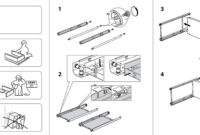Why Some Gadgets Stand Out in a Crowd of Lookalikes sets the stage for an exploration into the fascinating world of technology where innovation often takes a backseat to imitation. In a market flooded with similar designs and features, certain gadgets manage to capture the attention of consumers and stand out. This discussion delves into the characteristics that elevate some devices above the rest, focusing on design, functionality, and branding that set them apart in an ever-competitive landscape.

As we navigate through this topic, we will uncover the elements that contribute to a gadget’s uniqueness, from cutting-edge technology to exceptional user experience, and how these factors influence consumer choices in the gadget market.
In today’s fast-paced world, the importance of effective communication cannot be overstated. Whether in a professional setting, social interactions, or even in our digital lives, the ability to convey ideas clearly and concisely is essential. This article explores the nuances of communication, highlighting its significance, different forms, and tips for improving it.
### The Significance of Communication
Effective communication is crucial for a variety of reasons. At its core, it allows us to convey our thoughts, feelings, and intentions to others. This exchange of information is not just about words; it’s about understanding and being understood. Strong communication skills can lead to better relationships, enhanced teamwork, and increased productivity in professional environments.
In the workplace, clear communication can prevent misunderstandings and reduce conflicts. For instance, when team members share their ideas and feedback openly, projects can progress more smoothly. On a personal level, effective communication fosters deeper connections. It allows individuals to express their needs, concerns, and emotions, leading to healthier relationships.
### Forms of Communication
Communication can take many forms, and understanding these can enhance our ability to connect with others. The primary forms include:
1. Verbal Communication: This includes spoken language, where tone, pitch, and pace play crucial roles. Effective verbal communication involves not only what we say but how we say it. Active listening is a key component, allowing us to respond appropriately to others.
2. Non-Verbal Communication: Body language, facial expressions, and gestures can convey messages even without words. For example, a smile can indicate friendliness, while crossed arms might suggest defensiveness. Being aware of our own non-verbal cues, as well as those of others, can enhance our interactions.
3. Written Communication: Emails, texts, reports, and social media posts are all examples of written communication. Clarity and conciseness are vital here. Poorly written messages can lead to confusion, while well-structured writing can convey professionalism and attention to detail.
4. Visual Communication: This form involves the use of images, graphs, and videos to convey information. In an age dominated by visuals, understanding how to effectively use and interpret visual communication is increasingly important.
### Barriers to Effective Communication
Despite its importance, various barriers can hinder effective communication. Some common obstacles include:
– Language Differences: In diverse environments, language barriers can lead to misunderstandings. It’s essential to ensure that everyone is on the same page, which may involve simplifying language or using translations.
– Cultural Differences: Different cultures have varying communication styles and norms. What may be considered polite in one culture could be seen as rude in another. Being culturally aware can help bridge these gaps.
– Emotional Barriers: Personal emotions can affect how we communicate. Stress, anger, or sadness can influence the tone and clarity of our messages. Recognizing these feelings and managing them can improve communication effectiveness.
– Physical Barriers: In remote or hybrid work environments, physical distance can create communication challenges. Utilizing technology effectively can help overcome these barriers, but it’s essential to establish regular check-ins and open lines of communication.
### Tips for Effective Communication
Improving communication skills is an ongoing process. Here are some practical tips to enhance your communication abilities:
1. Practice Active Listening: Focus on what the other person is saying without formulating your response while they speak. Show that you’re engaged through nodding and appropriate verbal affirmations.
2. Be Clear and Concise: Whether speaking or writing, aim to express your ideas clearly and succinctly. Avoid jargon and convoluted language that may confuse your audience.
3. Adjust Your Communication Style: Tailor your communication to suit your audience. Consider their preferences and backgrounds, and adapt accordingly.
4. Provide Feedback: Encourage a two-way communication process. Providing constructive feedback shows that you value the other person’s input and fosters an open dialogue.
5. Embrace Empathy: Understanding others’ perspectives can greatly enhance communication. Empathy allows you to connect on a deeper level, making conversations more meaningful.
6. Improve Your Body Language: Be mindful of your non-verbal cues. Maintain eye contact, use appropriate gestures, and ensure that your body language aligns with your spoken words.
7. Utilize Technology Wisely: Use communication tools that suit your context. Video calls, instant messaging, and emails each have their advantages, so choose the right one for your message.
8. Seek Clarification: If you’re unsure about something, don’t hesitate to ask questions. Clarifying doubts demonstrates your commitment to understanding.
9. Be Open to Different Perspectives: Engaging with diverse viewpoints can enrich discussions. Be willing to consider other opinions and learn from them.
10. Reflect on Your Conversations: After significant discussions, take a moment to reflect on what went well and what could be improved. This self-assessment can help you grow in your communication skills.
### Conclusion
In conclusion, effective communication is a vital skill that impacts various aspects of our lives. By understanding its significance, recognizing different forms, and implementing strategies to overcome barriers, we can enhance our ability to connect with others. Whether in professional settings or personal relationships, honing these skills can lead to more meaningful interactions and a greater understanding of those around us. As we continue to navigate a world of diverse perspectives, the importance of effective communication will only grow, making it an invaluable asset in our daily lives.
In summary, the journey through Why Some Gadgets Stand Out in a Crowd of Lookalikes reveals that it is not merely about having the latest features but rather a combination of innovation, design, and effective marketing that drives a gadget’s success. By understanding these key differentiators, consumers can make more informed decisions in a saturated market while brands can strive to innovate and improve their offerings. The future will continue to challenge manufacturers to create gadgets that truly resonate with users, ensuring that the standout devices will always find their place in the spotlight.
Common Queries: Why Some Gadgets Stand Out In A Crowd Of Lookalikes
What makes a gadget stand out from others?
A gadget stands out due to its unique design, innovative features, user-friendly interface, and strong branding that resonates with consumers.
Are all high-tech gadgets considered standout products?
No, not all high-tech gadgets are considered standout products. It depends on how well they meet consumer needs and differentiate themselves from competitors.
How important is branding in making gadgets stand out?
Branding plays a crucial role in making gadgets stand out, as it creates an emotional connection with consumers and builds trust and loyalty.
Do design and aesthetics matter in gadget popularity?
Yes, design and aesthetics are important factors, as visually appealing gadgets often attract more attention and can enhance user experience.
Can a gadget’s performance affect its status as a standout device?
Definitely, a gadget’s performance is critical; superior functionality and reliability can significantly influence its perception in the market.



